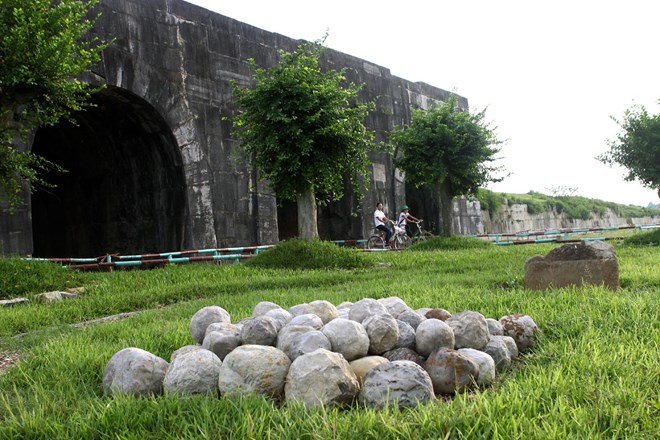Exhibition spotlights Ho Citadel archeological excavations
An exhibition on archeological excavations at the Ho Dynasty Citadel in the past 5 years opened in Thanh Hoa Province on 15 December.
 |
| Part of the Ho dynasty citadel (Photo: VNA) |
Organised by the Ho Citadel Heritage Conservation Centre, the event aimed to celebrate the 5th anniversary of the relic site as a global heritage. As part of the celebration, the centre also allows all visitors to visit free-of-charge on 15 and 16 December .
The Ho Dynasty Citadel was Viet Nam’s capital under the Ho Dynasty (1398-1407). Located in Vinh Loc District, the citadel measures 870m by 883m and was built in 1397. It is the only citadel in the country which was built entirely of stones and remained nearly intact throughout the nation’s history.
It was recognised as a World Cultural Heritage Site by UNESCO on 27 July 2011. According to experts, the structure is an outstanding example of a new style of construction for a Southeast Asian imperial city.
The exhibition featured outcomes of excavations at the Nam Giao worship area, central palace, the canal system and entrances.
Most notably, four excavations at the Nam Giao worship area, which spans 18,000m2, have shown foundations of various structures and found myriad artifacts.
Meanwhile, in 2015, the Ho Citadel Heritage Conservation Centre excavated part of the southern canal over an area of over 2,000m2 and clarified the scale, structure and functions of the defending canal. In addition to the defence purpose, the canal provided a workshop producing stones used in the construction of the citadel.
Another excavation in the southern gate unearthed a bluestone road connecting the entrance with the Nam Giao worship area. The inner road was considered the most intact amongst roads from the feudal period found in Viet Nam.
(Source: VNA/DA NANG Today)